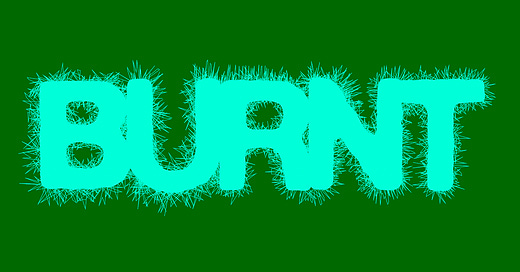So, you're thinking about quitting, but you're scared. You tell yourself you "can't" because of bills, responsibilities, or a sense of loyalty to your team. Or maybe it's not even your job. It's a client, a relationship, a volunteer gig, or a class. You're "in too deep" or it's "not fair to them," you reason.
These are excuses. I've been there. But over the past few years, I've learned how to quit. Not just quit, but quit and start over—with dignity, integrity, and respect for myself and others.
In the U.S., quitting is seen as a failure. We believe it will damage our reputations or put us at risk. So we don't quit when we should, with a plan. Instead, we quit out of panic, anger, and desperation, waiting until the last possible moment and then saying, "I was pushed to this point."
The fear of quitting can be paralyzing. While quitting can be difficult, it doesn't necessarily mean admitting failure. Sometimes, it's the bravest decision we can make, especially when a situation is no longer serving us. I get it…we're creatures of habit, we cling to comfort even when it's detrimental….But I challenge that this fear traps us in situations that no longer serve us, leading to burnout, resentment, and a loss of self.
As a person who has quit multiple times, I've learned that quitting isn't inherently bad. It's how you quit that matters. You don't need a dramatic reason; if something doesn't feel right for your soul, heart, or values—or even if you're just plain unhappy—it's okay to walk away.
But quitting with integrity is essential. It's about taking responsibility for your decision, communicating it clearly, and handling the transition as smoothly as possible. This doesn't mean overextending yourself or sacrificing your own well-being in the process, but it does mean being mindful of the impact your decision will have on others, and taking steps to follow through with respect.
So, how do you quit with integrity? Start by making a personal plan. Set a timeline, tie up loose ends, and document any necessary information. When I quit the Museum of Ice Cream, I sent a calendar invite to my friends and family 30 days before my official resignation, titled "Madison Resignation Date." This helped me solidify my decision and gave me a clear timeline to work towards. It also served as a way to inform my loved ones of my decision and get their support during the transition. Once I had my personal plan in place and was ready to move on, then I presented my resignation to the Museum in a formal letter. I expressed my gratitude for the opportunity and briefly explained my reasons for leaving, keeping it professional and succinct.
Above all, I put myself first. Quitting is an act of self-respect. It's about choosing what's best for you, even if it's difficult or uncomfortable. Remember, burnout and unhappiness won't be cured by a massage or toughing it out. Sometimes, the bravest and most empowering thing you can do is simply to quit—and begin again.
When you quit, you are reclaiming your agency, honoring your intuition, and stepping boldly into the unknown. You’re trusting that the right path will reveal itself…and it will.
We all have that power, even when we doubt it.
Cheers to quitting.




